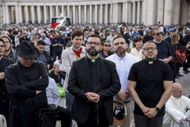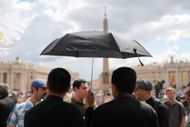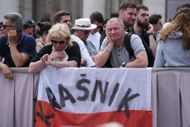The Catholic Church has embarked on a historic process known as the Papal Conclave after the passing of Pope Francis on April 21, 2025. To choose his successor, 133 cardinals from all over the globe have convened in Vatican City for the papal conclave. The proceedings started on May 7 in the Sistine Chapel.
This conclave is a secret and strict process. The cardinals cannot make contact with the outside world and have to cast their votes in secret. To be elected the new pope, a candidate must get a two-thirds majority vote.
The first ballot concluded with no decision, as indicated by the black smoke emanating from the chapel. The cardinals again began casting votes on May 8. The world is now waiting to see white smoke, which will indicate the choice of a new pope for the Church's 1.4 billion members.
Why is the papal conclave important?

The pope is the religious leader of the Catholic Church. He plays a central role in influencing religious teaching and policy. His reach also can play an influential role in international issues such as peace, poverty, and climate change. The new pope will chart the Church's course ahead.
The conclave is the official method of electing a pope. It has been utilized for centuries. It demonstrates the unity and diversity of the Church. The cardinals are from various nations and speak numerous languages. Yet, they need to agree on someone.
This is also significant due to the troubles the Church is experiencing at present. These include waning attendance levels in certain pockets, abuse scandals, and political tensions. The new pope must address these while ensuring tradition and order are kept in the Church.
Read More: Is the GTA 6 trailer 2 the most viral video ever? What we know about Rockstar Game's claim
How does the papal conclave work?

The papal conclave is held within the Sistine Chapel within Vatican City. Cardinals are sealed within and asked to give up their phones and any form of communication. This is to shield the process from external influence.
There is a secret paper ballot vote. The ballots are burned in a special stove after every round of voting. Black smoke is made by adding a chemical if a pope is not elected. White smoke indicates that the church has found its new head.
There are as many as four voting sessions daily: two in the morning and two in the afternoon. There is no limit on time. The conclave goes on until one of the candidates gets the necessary two-thirds vote. Historically, some conclaves have lasted a day, while others have taken years.
Read More: Why did WeightWatchers file for bankruptcy? Complete drama explained
Who are the leading candidates?

There are some names that have been in the limelight. Italian Cardinal Pietro Parolin is an excellent diplomat and has been the Vatican Secretary of State. Filipino Cardinal Luis Antonio Tagle is a leader from the Philippines and is connected to the global south. Hungarian Cardinal Péter Erdő has a robust legal and theological foundation.
Nevertheless, nobody can be certain who will be elected. In previous conclaves, the ultimate selection has sometimes shocked onlookers. There are many considerations involved. Among these are the candidate's pedigree, age, leadership style, and world vision.
The Church can also look at regional representation. Popes have usually been Europeans, but in recent times there has been a trend towards more universal representation. There could be cardinals who might wish to have a pope from Africa, Asia, or Latin America.
The 2025 papal conclave is a new beginning for the Catholic Church. Once Pope Francis dies, the world waits to find out who will be elected the next pope. The papal conclave is hidden from the public eye, but the result will determine the future of the Church.
As the cardinals continue voting, all eyes are on the Vatican. When white smoke appears over the Sistine Chapel, the world will know who the new head of the Catholic Church is. Until that time, the conclave drags on. The Church and its people wait in hope and prayer.
